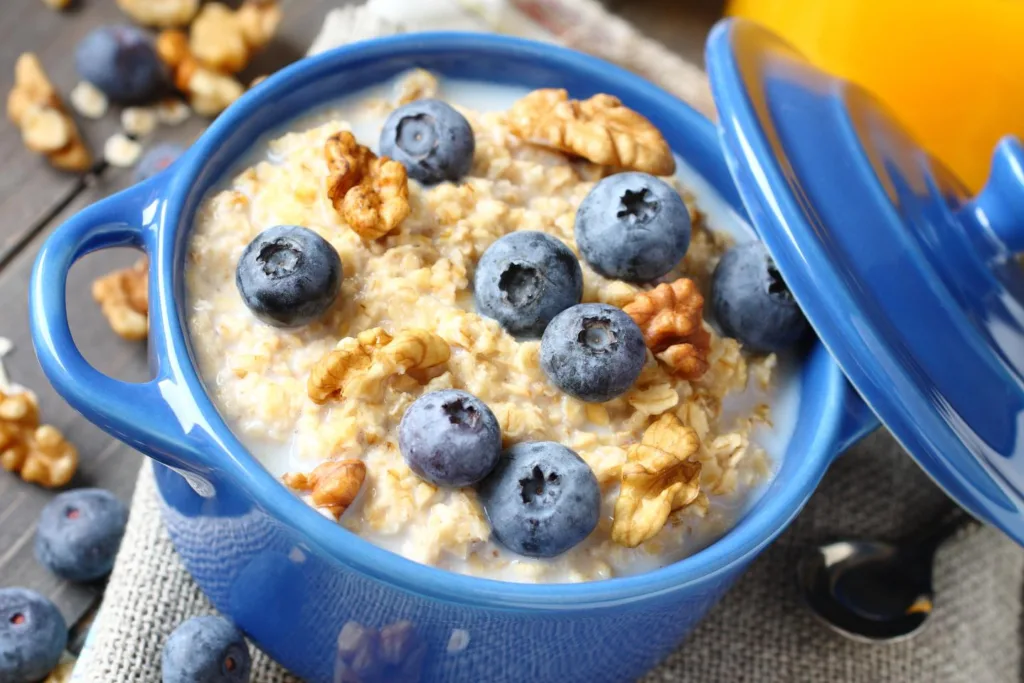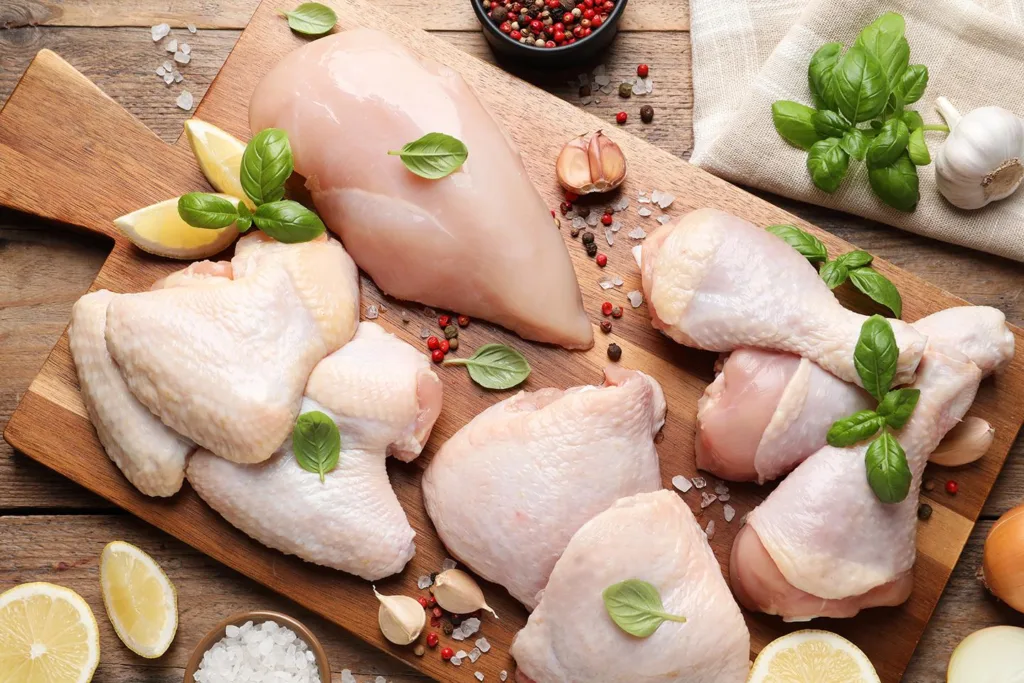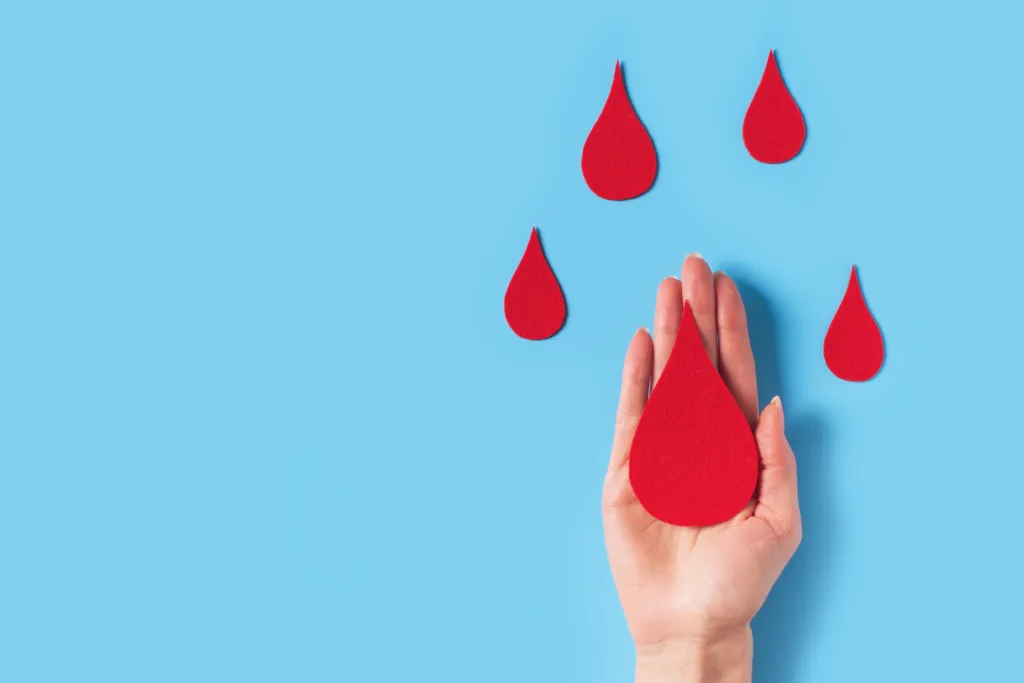Table of Contents
TRANSCRIPT
On May 10, 2024, just a couple of weeks ago, the story of a man receiving a pig kidney transplant took a tragic turn as he lost his life just seven weeks later (1). This story emphasizes the critical need for kidney health awareness, especially when over 100,000 Americans are on transplant waiting lists, with around 87% of those awaiting kidneys (2).
Despite its prevalence, about 90% of kidney disease cases go undiagnosed, with 12 people dying daily while awaiting transplants (3). In 2022, the U.S. completed 25,499 kidney transplants, but as of February 2023, 88,658 Americans were still awaiting transplants (4). You wouldn’t want to be among them, right? That’s why early detection is key in combating kidney disease (5). But if you already have kidney disease, things are much more complex. While having kidney disease, the healing ability improves by adopting healthy habits such as regular exercise, managing other health conditions like high blood pressure and diabetes, avoiding smoking and excessive alcohol, and being cautious with medications like NSAIDs (6). But what really matters is making sure your meals are healthy, balanced, and kidney-friendly.
A kidney-friendly diet can slow disease progression and further damage (7, 8, 9). It should prioritize lower amounts of sodium, protein, potassium, and phosphorus intake (10). This practice helps heal the buildup of waste products in the blood and controls blood pressure. The Mediterranean and DASH diets are recommended for those with kidney disease as they slow kidney disease progression and even reduce the risk of cardiovascular disease, a common risk factor for kidney disease. These diets are high in fiber and low in processed meats. Plus, these diets contain essential nutrients like magnesium and calcium while being low in sodium (11, 12, 13). However, you can still get a lot of potassium and phosphorus from these diets by eating certain foods. We’ve explained this in detail in our previous video, and you can check it out to see what foods you should avoid.
Now, in this video, let’s dive into what foods you should include in a kidney diet. We’ll share valuable insights on incorporating kidney-friendly natural foods into your meals, offering practical and delicious ways to support and enhance kidney health.
Before we dive in, kindly note that all information you’ll find in this video is produced by humans, and for humans. You can visit our website at healthtoday.com to see our advisory board and the team behind these videos.
We don’t use artificial intelligence writing tools like ChatGPT to automatically generate content. Be assured, our information is thoroughly fact-checked, unbiased, and reviewed by qualified professionals. Alright, it’s time to swing back to the natural foods that support healing your kidneys!
10 Natural Foods to Heal Your Kidneys
10. Watermelon
Watermelon is traditionally known to protect against kidney diseases and help with urine flow. Native Americans have long used the fruit to treat water retention and kidney stones (14, 15). Plus, its natural diuretic properties promote urine flow without straining the kidneys (16). Additionally, watermelon aids the liver in processing ammonia, easing kidney strain while eliminating excess fluids (17).
Studies suggest that watermelon’s diuretic action may rival that of prescription diuretics, making it a potential natural option for managing excess fluid. However, it’s crucial to consult a healthcare provider before substituting watermelon for prescription diuretics. Moreover, watermelon is packed with antioxidants like lycopene, vitamin C, and citrulline, which have anti-inflammatory effects (17, 18). Including watermelon in an anti-inflammatory diet can reduce body fat percentage, body mass index, and body weight (19). This can indirectly benefit your kidneys, as obesity is a common risk factor for kidney disease (20).
A 2021 study in Current Research in Physiology investigated how watermelon rind extract could help rats with kidney and liver injury caused by lead acetate (21). They divided rats into groups and treated them with lead acetate alone or in combination with watermelon rind extract for 30 days. Lead toxicity caused kidney and liver damage, indicated by raised levels of certain substances in the blood and reduced antioxidant protection. However, treatment with watermelon rind extract reduced these damaging effects and enhanced antioxidant defenses, suggesting its potential to promote kidney health (21). So, next time you buy a watermelon, don’t just throw the rind away. You can add it to your smoothie or juice for extra kidney benefits.
Yet, note that a cup of diced watermelon provides you with 170 mg of potassium. If you have kidney disease, having the right amount of potassium in your diet is important. So, limit your watermelon serving to one or two cups a day (17, 22).
Also, be careful of any “watermelon diet” suggested online for kidney detox. Eating two servings of watermelon daily is safe, but sticking to a diet solely focused on watermelon or any one food isn’t recommended. A “watermelon cleanse” is just a fad and can deprive your body of essential nutrients it needs” (17).
9. Kale
Kale, a nutrient-rich leafy green vegetable, belongs to the Brassica oleracea family, along with cabbage and broccoli (23). It’s low in calories yet packed with essential nutrients like vitamins A, B6, C, K, folate, fiber, and manganese. Additionally, this powerful vegetable contains antioxidants, including beta-carotene, flavonoids, and polyphenols, which help combat oxidative damage in the kidneys (24).
However, it’s important to note that people prone to oxalate-containing kidney stones or those taking blood thinners may need to limit kale intake (25). While kale is relatively low in Oxalate compared to other dark leafy greens such as Spinach, it is still considered moderate to low levels, so talk with your doctor (26).
Despite its nutritional benefits, kale is remarkably low in calories, with just 20 calories per cup. It’s recommended to consume 1.5–2 cups of dark green vegetables weekly, making kale a great choice to meet this goal (25).
You have several options for enjoying kale, whether fresh, cooked, or juiced. This vegetable thrives in cooler temperatures, making it ideal for autumn and winter harvests (27). It’s commonly used in salads, soups, smoothies, and even as a healthy snack like kale chips, adding both flavor and nutrition to dishes. To incorporate kale into meals, you can tear leaves into morning smoothies and use whole leaves as replacements for tortillas or bread in sandwiches. Kale can also enhance the flavor and nutrition of hearty bean soups for dinner (25).
8. Fish
Almost every kidney-friendly diet recommends eating high-quality proteins (28, 29), and fish is a great source. In fact, fish is a highly recommended diet component for individuals with kidney disease due to its rich, high-quality protein content and essential omega-3 fatty acids. While all types of fish provide valuable protein, certain varieties, like salmon, offer particularly high amounts of omega-3s, which are vital for heart, brain, and overall health (30).
Most people with kidney disease or transplants do not need to restrict their fish consumption (30). However, protein intake must be adjusted based on the stage of the disease, which necessitates consultation with a dietitian.
Fresh fish is the preferred option, but individuals with end-stage kidney disease (ESRD) should avoid raw fish and shellfish due to the risk of infections. Similarly, transplant recipients, who are more vulnerable to foodborne illnesses due to immunosuppressive medication, should steer clear of undercooked fish.
In a 2009 study on Ikaria Island involving 673 elderly residents aged 65-100, researchers aimed to explore the link between fish intake and kidney function by looking at their creatinine clearance (CCr) rate (31). CCr rate is a measure used to assess how well your kidneys filter waste from the blood. It’s calculated by measuring the amount of creatinine, a waste product from muscle metabolism, in a person’s urine over a specific period, usually 24 hours. This measurement helps doctors understand how efficiently the kidneys are working. Turning back to the study, scientists saw that 84% of participants consumed more than 150g of fish each week. However, about 35% of them concurrently had issues with their CCr (<60 mL). The analysis showed that the more fish people ate, the better their CCr rate tended to be. This result is true even after considering other things like overall diet. Specifically, eating 100 grams of fish each day seemed to increase the chances of having a CCr rate higher than 60 mL by 121%. These outcomes suggest regular fish consumption may improve kidney function, especially among the elderly (31).
Fishes are now at higher risk of exposure to heavy metals like mercury. So, it’s advisable to choose smaller fish and consult local advisories. Additionally, opting for fresh fish over canned varieties helps lower sodium intake, which benefits individuals with kidney disease (9).
7. Egg White
Eggs, another great source of high-quality protein, contain all nine essential amino acids, along with essential vitamins and minerals like vitamins A, D, E, K, folate, selenium, B vitamins, and choline (31).
For individuals with chronic kidney disease (CKD) or those who have undergone a transplant, eggs can be a good source of animal protein. Also, they are low in sodium and potassium, which can be beneficial for those managing CKD. Regarding kidney stones, consuming eggs does not impact their formation. However, due to their phosphorus content, it’s crucial to monitor phosphorus levels closely when incorporating eggs into the diet. Consult a kidney dietitian to determine the safe intake level (31).
Regarding the concern about phosphorus in eggs, a 2011 study in the Journal of Renal Care showed some interesting results. In this study, researchers looked at maintenance hemodialysis (MHD) patients (32). MHD is a medical treatment for individuals with end-stage kidney disease (ESRD) who require regular dialysis to filter waste and excess fluid from their blood. In this study, researchers investigated the effects of consuming pasteurized liquid egg whites on the MHD patients’ blood serum phosphorus levels. The study involved 13 MHD patients consuming eight ounces (or about 227 grams) of egg whites daily for six weeks. Results showed a significant decrease in serum phosphorus, with an average drop of 0.94 mg/dl. Serum albumin levels, the main protein found in eggs, also increased slightly. This increase suggests egg whites may effectively lower serum phosphorus without causing malnutrition in MHD patients. So, egg white has the very potential to promote kidney health (32).
6. Olive Oil
Olive oil, especially extra virgin olive oil (EVOO), is rich in phytochemicals, including polyphenolic compounds. In patients with kidney issues, EVOO has been shown to improve kidney function biomarkers, cholesterol levels, and body composition. They can also help reduce oxidative stress and inflammation, which can help reduce kidney disease progression (33).
EVOO, especially the Synergy type, which is rich in minor polar compounds (MPCs), can be really helpful for people with kidney problems. It contains substances that fight off harmful molecules and reduce inflammation in the body, which heals kidney issues better.
These benefits persist even after stopping its use, highlighting olive oil’s lasting positive impact on kidney health.
A 2021 study conducted at a nephrology institute involved 40 patients with chronic kidney disease (CKD) (33). Over nine weeks, they consumed 40 mL/day of two different extra virgin olive oils (EVOOs): one with high MPC called Synergy and the other with medium MPC content known as Luxolio. The results revealed that both EVOOs significantly improved kidney function biomarkers, lipid levels, oxidative stress, and inflammatory parameters in CKD patients. However, the positive effects were more significant and lasted longer in patients who consumed the Synergy EVOO. This result suggests that daily consumption of EVOO, particularly high in MPCs, can have important anti-inflammatory and antioxidant effects, promoting kidney health (33).
Adding olive oil into the diet can be as simple as using it as a salad dressing, drizzling over vegetables, or substituting butter or margarine in cooking (33). Extra virgin olive oil is high in antioxidants but low in smoke point, so use it for low to medium-heat cooking or in dressings to preserve its health benefits. Avoid high-heat cooking to prevent burning (34).
In the Mediterranean diet, where EVOO is a primary source of vegetable fats, it has been associated with enhanced kidney function, reduced inflammation, and improved lipid profiles. However, due to its high-calorie content, it’s crucial to consume olive oil in moderation (23).
Read more: 10 Best Foods for Faster Brain Recovery
5. Garlic
Garlic, particularly its active compound allicin, offers beneficial effects for healing chronic kidney disease (CKD). Allicin helps protect your kidneys by reducing harmful substances, improving their ability to heal, and boosting the activity of a key enzyme called superoxide dismutase, which fights off damaging molecules (35). It also improves kidney function by lowering blood pressure. For example, its blood pressure-lowering effect is as good as or better than losartan, a common medication for high blood pressure (35).
A 2021 narrative review in the Journal of Clinical Nutrition highlights the potential benefits of garlic in chronic kidney disease (CKD) management. With its potent anti-inflammatory, antioxidant, and antimicrobial properties, garlic has the potential to mitigate complications associated with CKD, including cardiovascular issues and gut dysbiosis. While more research is needed to fully understand garlic’s role in CKD treatment, its use as a nutritional intervention shows promise in promoting kidney health and improving patient outcomes (36).
Garlic is generally safe when eaten as part of your diet (37). However, for people with CKD, it’s best to be cautious with garlic supplements. These supplements are more concentrated and contain higher potassium, phosphorus, and sodium levels than fresh garlic, which can be harmful to CKD patients (38). Possible side effects of garlic include bad breath, body odor, heartburn, and stomach upset, especially when eaten raw. Garlic supplements may also increase the risk of bleeding. Therefore, it’s important to talk to your healthcare provider before taking garlic supplements for kidney health (39).
If you decide to consume garlic, it’s best to eat it whole as part of your meals. You can make a basic garlic infusion by chopping fresh garlic and blending it with olive oil. It’s perfect for dressing salads or cooking veggies, adding flavor without extra salt, which is excellent for kidney health.
4. Blueberries
Blueberries are a great choice for a kidney diet due to their low potassium, phosphorus, and sodium content (40, 41). They’re also rich in fiber, vitamins, and antioxidants like vitamin C, vitamin K, and manganese, which greatly support kidney health. Blueberry has been shown to improve kidney function and reduce oxidative stress, potentially alleviating kidney damage in individuals with metabolic syndrome (42). Pterostilbene (PTE), a bioactive component of blueberries, has been shown to possess kidney healing functions. It can also lower uric acid levels in the blood—another good news for your kidneys. High blood uric acid levels can lead to gout, kidney stones, and certain kidney problems, so it’s best to keep uric acid levels low (42, 43).
A 2018 study in Biomedicine & Pharmacotherapy investigated the potential of PTE in treating kidney fibrosis in hyperuricemic nephropathy, a kidney condition caused by high levels of blood uric acid. In mice with hyperuricemic nephropathy, PTE treatment reduced markers of kidney damage, such as the lower levels of waste compounds like creatinine and uric acid in the blood, and albumin in the urine. Also, this treatment greatly lowers kidney scarring, called kidney fibrosis, by reducing the production of proteins like fibronectin and collagen that contribute to the scarring process. These findings highlight PTE’s potential as a promising treatment for healing kidney damage (44).
For optimal kidney health, it is recommended to consume half a cup of blueberries per serving (22).
Read more: 25 High-Fiber Foods To Keep You Healthy, Happy and Full
3. Onions
Onions, or Allium cepa, are a natural food that can promote kidney health. Low in potassium, phosphorus, and sodium, onions are ideal for those with kidney disease. They contain sulfur compounds that lower the risk of high blood pressure, a common factor in kidney disease. These compounds also give onions their distinct smell (18).
Additionally, onions are rich in quercetin, a potent antioxidant that combats cancer and heart disease. Onion extract has been shown to alleviate the kidneys from toxins like cadmium, maintaining urine volume and kidney function. Furthermore, onions’ antioxidants, especially quercetin, can alleviate oxidative stress, contributing to kidney health (45).
A 2021 review article explores how Allium cepa L. (a type of onion) and its active components might help address various risk factors linked with metabolic syndrome, including high cholesterol, high blood pressure, diabetes, and obesity (46). When you have these diseases, your risk of kidney disease also increases (20). So, onions can indirectly help with kidney disease by reducing the risk of metabolic diseases. Onions have antioxidant and anti-inflammatory properties, and they can widen blood vessels. They also affect how the body handles glucose and fats, improving insulin and cholesterol levels. These qualities make onions a hopeful option for healing and treating heart diseases related to metabolic syndrome. However, further clinical studies are warranted to confirm its effectiveness and safety, especially regarding potential interactions with conventional drugs (46).
You can find onion supplements like onion juice online or in local stores. However, eating the actual food is always better for getting health benefits. While your body may benefit from eating onions, their sulfur compounds can cause bad breath and body odor. Cooking onions can reduce their sulfur content. Options like sautéing, caramelizing, frying, or cooking onions can help. After eating onions, you can also try mints or gum to freshen your breath (47).
2. Red grapes
Red grapes offer kidney-friendly benefits thanks to their low potassium and high fluid content. Packed with flavonoids, they alleviate kidney disease by relieving oxidation and blood clot formation. Resveratrol in red grapes boosts nitric oxide production, relaxing blood vessel muscles for better circulation (48).
Rich in vitamins C and K, grapes support kidney health, along with fiber and essential minerals like copper, manganese, and magnesium. However, their potassium content means moderation is key for CKD patients who are taking potassium-restricted diets (49).
Here is a highlight of how red grapes can help heal the kidneys, particularly through grape seed extract and whole grape powder. Grape seed extract supplements can improve kidney function and slow CKD progression by enhancing antioxidant and anti-inflammatory activity. Similarly, whole grape powder intake reduces kidney damage and improves kidney function in diabetic rats, suggesting potential benefits for delaying CKD progression in humans (40). Furthermore, resveratrol, a polyphenol in grapes, exhibits antioxidant, and anti-inflammatory effects, offering promise for managing kidney disease (50, 51).
In a 2022 animal study published in the Journal of Life, red grape juice showed promise in mitigating nephrotoxicity (kidney damage) and oxidative stress in rats (52). Scientists administered the rats red grape juice and gentamicin, a drug harmful to kidneys, for seven days. They found that red grape juice lowered oxidative and nitrosative stress and improved kidney function. The treatment with red grape juice led to positive changes in the structure and appearance of the kidneys when viewed under a microscope. These findings suggest that red grape consumption may be a valuable strategy for combating nephrotoxicity, although further studies are needed to determine optimal doses and how they work exactly (52).
1. Pomegranate
Pomegranates are rich in antioxidants, fiber, essential vitamins, and minerals like potassium, making them a nutritious choice for kidney health (53). However, their high potassium content means moderation is key for those with kidney issues, especially for hemodialysis patients, because the kidneys can’t get rid of extra potassium (22). Pomegranates may interfere with transplant medications, so transplant recipients should consult their healthcare provider (53). They also offer potential benefits in healing kidney stones due to their antioxidant compounds (54, 55, 56).
In a 2015 study in Urology Annals, researchers investigated the effect of pomegranate extract on kidney damage in rats with unilateral ureteral obstruction (UUO), which happens when something blocks one of the ureters or the tubes that carry urine from the kidney to the bladder. After 14 days, they evaluated kidney damage under a microscope, and the results showed that pomegranate extract significantly heals kidney damage by reducing oxidative stress (57).
Pomegranates are tasty by themselves, but you can mix them into salads or smoothies or sprinkle them on yogurt or oatmeal for extra flavor (53). While pomegranate juice retains antioxidants during cooking, it lacks the fiber found in pomegranate arils. Pairing pomegranates with protein or fat sources can help stabilize blood sugar levels.
Precautions While Taking Natural Foods to Heal Your Kidneys
Many kidney-friendly foods like kale, fish, and pomegranates are rich in potassium. While potassium is essential for overall health, too much harm those with kidney issues (22, 58). Kale also contains oxalates, which can contribute to the formation of kidney stones, particularly in individuals prone to them (25). Limit intake if you have a history of kidney stones. Eggs, particularly egg whites, are high in protein but may also contain phosphorus, which can be problematic for individuals with kidney disease (31). Olive oil and garlic offer health benefits but should be consumed in moderation. Olive oil is high in calories, and garlic supplements may contain high levels of potassium and sodium, which can be harmful to those with kidney issues (38).
Some individuals may be allergic to certain foods, such as fish or onions. Be mindful of any allergic reactions and consult a healthcare provider if you experience symptoms like hives, swelling, or difficulty breathing after consuming these foods (59).
Watermelon, known for its hydrating properties, can be beneficial for kidney health. However, excessive fluid intake can strain the kidneys. In healthy people, drinking 4-6 cups of water a day and getting water from food is recommended, but this may vary depending on physical activity, environment, and any medical conditions (60).Every individual’s dietary needs are unique, especially when managing kidney disease. Consult a dietitian or healthcare provider to develop a personalized meal plan that takes into account your specific condition, dietary preferences, and goals for kidney health (61).
Summary
Kidney disease is a serious health concern that can cause anemia, weak bones, nervous system damage, and even seizures. On top of that, chronic kidney disease is often detected in its advanced stage, in which your kidneys are severely impaired, affecting normal tasks like filtering blood, removing waste, and controlling blood pressure (62, 63). So, it’s great to understand your condition to so that you can detect kidney disease early. Diabetes, high blood pressure, heart disease, family history, and obesity are all contributing to the onset of kidney disease (62, 63).
Note that prevention is even more important than early detection. If you’ve watched this video up to this point, you would have recognized that adopting a kidney-friendly diet rich in natural foods like kale, fish, egg whites, olive oil, garlic, blueberries, onions, watermelon, red grapes, and pomegranates can play a crucial role in repairing the kidneys and preventing kidney disease progression. By incorporating these natural foods into daily meals, you can take proactive steps towards enjoying a more energetic, motivated, and healthy life. However, it’s essential to consume these foods in moderation, as all foods have good and bad elements.
Also, be mindful of your individual dietary needs and any pre-existing health conditions. Consulting a healthcare provider or dietitian for personalized guidance is key to optimizing kidney health.
Sources
- First person to receive a genetically modified pig kidney transplant dies nearly 2 months later
- Transplant waiting list
- Kidney Disease: The Basics
- Kidney Disease Statistics for the United States
- Chronic Kidney Disease (CKD)
- Prevention-Chronic kidney disease
- Nutrition and Early Kidney Disease (Stages 1–4)
- Preventing Chronic Kidney Disease
- Superfoods
- Kidney diet (renal diet)
- Vegetable-Based Diets for Chronic Kidney Disease? It Is Time to Reconsider
- Inflammation and Oxidative Stress in Chronic Kidney Disease—Potential Therapeutic Role of Minerals, Vitamins and Plant-Derived Metabolites
- Mediterranean Diet and Chronic Kidney Disease (CKD): A Practical Approach
- Medicinal Values on Citrullus lanatus (Watermelon): Pharmacological Review
- Evaluation of anti-urolithiatic and diuretic activities of watermelon (Citrullus lanatus) using in vivo and in vitro experiments
- Natural Diuretics to Reduce Water Retention
- Why Watermelon Should Be Part of Your Diet
- Diet – chronic kidney disease
- Impact of a 3-Month Anti-inflammatory Dietary Intervention Focusing on Watermelon on Body Habitus, Inflammation, and Metabolic Markers: A Pilot Study
- Risk factors for kidney disease
- Watermelon rind ethanol extract exhibits hepato-renal protection against lead induced-impaired antioxidant defenses in male Wistar rats
- 40 Low Potassium Fruits and Vegetables to Add to Your Grocery List
- 10 superfoods to boost a healthy diet
- Nutrient contents of kale (Brassica oleraceae L. var. acephala DC.)
- Kale: Discover the ‘secret powers’ of this superfood
- Kidney Stone Oxalate Diet
- Kale
- Eating Healthy
- Nutrition and Kidney Disease, Stages 1-4
- Fish
- Usefulness of Extra Virgin Olive Oil Minor Polar Compounds in the Management of Chronic Kidney Disease Patients
- Eggs
- DIETARY EGG WHITES FOR PHOSPHORUS CONTROL IN MAINTENANCE HAEMODIALYSIS PATIENTS: A PILOT STUDY
- Usefulness of Extra Virgin Olive Oil Minor Polar Compounds in the Management of Chronic Kidney Disease Patients
- Healthy Oils and Fats
- From the distinctive smell to therapeutic effects: Garlic for cardiovascular, hepatic, gut, diabetes and chronic kidney disease
- The Beneficial Effects of Allicin in Chronic Kidney Disease Are Comparable to Losartan
- Eating & Nutrition for Hemodialysis
- Garlic
- Blueberries
- Recent Research on the Health Benefits of Blueberries and Their Anthocyanins
- A Blueberry-Enriched Diet Improves Renal Function and Reduces Oxidative Stress in Metabolic Syndrome Animals: Potential Mechanism of TLR4-MAPK Signaling Pathway
- Hyperuricemia (High Uric Acid Level)
- Pterostilbene, a bioactive component of blueberries, alleviates renal fibrosis in a severe mouse model of hyperuricemic nephropathy
- Onion (Allium cepa) extract prevents cadmium induced renal dysfunction
- The effects of Allium cepa L. (onion) and its active constituents on metabolic syndrome: A review
- Stop the Tears: Why Onions Are Good for You
- Health Benefits of Resveratrol in Kidney Disease: Evidence from In Vitro and In Vivo Studies
- Grape seed powder improves renal failure of chronic kidney disease patients
- Promoting Plant-Based Therapies for Chronic Kidney Disease
- Daily Intake of Grape Powder Prevents the Progression of Kidney Disease in Obese Type 2 Diabetic ZSF1 Rats
- Renoprotection of Selected Antioxidant-Rich Foods (Water Spinach and Red Grape) and Probiotics in Gentamicin-Induced Nephrotoxicity and Oxidative Stress in Rats
- Pomegranates
- Dietary Plants for the Prevention and Management of Kidney Stones: Preclinical and Clinical Evidence and Molecular Mechanisms
- The Protective Role of Dietary Polyphenols in Urolithiasis: Insights into Antioxidant Effects and Mechanisms of Action
- Kidney stone formation and antioxidant effects of Cynodon dactylon decoction in male Wistar rats
- Pomegranate extract attenuates unilateral ureteral obstruction-induced renal damage by reducing oxidative stress
- Dietary potassium and the kidney: lifesaving physiology
- Food allergy
- How much water should you drink?
- 6 Tips To Be “Water Wise” for Healthy Kidneys
- 7 Golden Rules of Kidney Disease Prevention
- Kidney Disease

















Comments
0